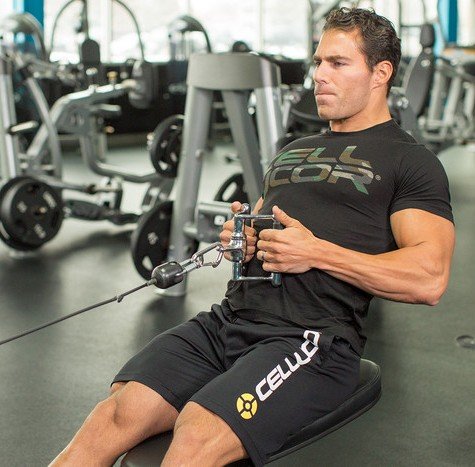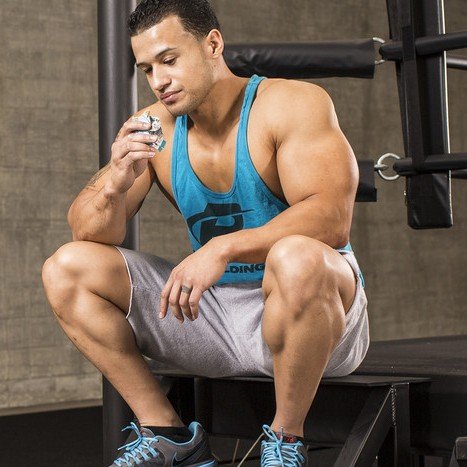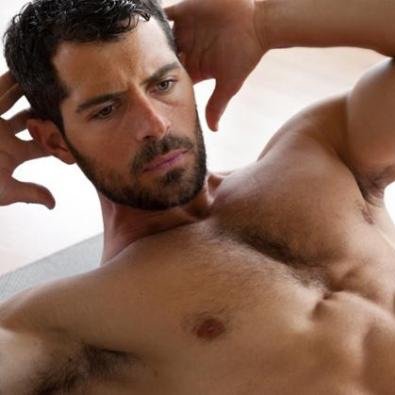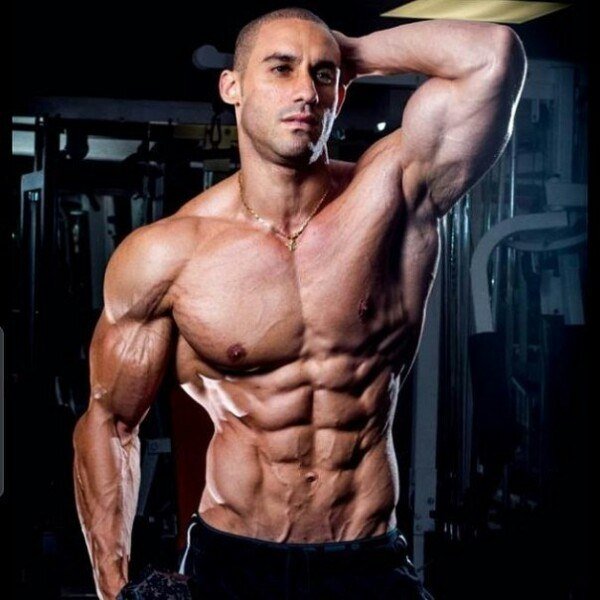Why would you want to set aside free weights, the meat and potatoes of lifting, and serve yourself up some exercises tied to a cable? Well, besides the fact that dropping a 45-pound plate on your foot hurts like hell, there are some very good reasons to expand your exercise horizons.
Unlike free weights, which always pull down with gravity, cables can pull from the side, from above, from below, from the front, and from the back. That flexibility opens up a whole new world of improved muscle development.
A standing EZ-bar cable curl is slightly different from a standing EZ-bar curl, incline cable flyes recruit your upper-chest muscles in a slightly different way than incline dumbbell flyes, and front cable raises resist in a slightly different way than front dumbbell raises.
With so many cable variations available, you can stimulate better overall muscle growth, especially if you've never done any of these exercises in the past.
Let's look at the top 10 cable exercises and explore why they should become part of your routine.
1. Seated Cable Row
Why it's on the list: Cable rows are a back-day staple for good reason: Multijoint exercises like this recruit more muscle groups and allow you to use a heavier load. Compared to single-joint moves, they signal your body to release higher levels of growth hormone and testosterone, and that means more muscle growth. You can also use different grips with this exercises—close, wide, underhand, overhand—so you can use one basic movement to hit your target muscles in lots of new ways.
In your workout: Do cable rows somewhere near the end of your back training. Front load your training with heavy deadlifts, bent-over rows, and/or T-bar rows before adding in a cable move. For greater range of motion, use the single-arm version of the row.
2. Cable Upright Row
Why it's on the list: When shoulder day comes around, this multijoint exercise is a great way to target the middle delts, especially if you use a wider grip. You can add a little more weight when standing, because you're able to generate a bit more body English. And you can create better isolation by doing the rows lying flat, either on the floor straddling the lower pulley, or at a seated-cable-row station. Use a bar with a rotating sleeve to go easier on your hands.
In your workout: Slip these rows in after your heavy overhead shoulder presses and before transitioning to your single-joint delt movements. You can also use them as a finishing exercise with dropsets if you want to fatigue the middle delts.
3. Pull-Down
Why it's on the list: Pull-downs move in a more up-and-down plane relative to your body compared to rows, in which you're largely pulling perpendicularly. Again, you can use any number of cable attachments and grips, so don't be afraid to experiment.
In your workout: Some people like to use pull-downs to warm up their shoulders because the movement has a long range of motion. But there are other ways to work pull-downs into your routine. Unlike with pull-ups, you can easily increase the load by increments, so you can continue doing a few challenging sets to begin your back session.
Or, once warmed up, you can just head over to more challenging free-weight exercises, then hit the pull-downs again later in your training.
4. Standing Single-Arm Cable Curl
Why it's on the list: There are plenty of ways to add cable-curl variations to your arm training, but this one's our favorite because you add new variations just by changing your orientation to the pulleys or by adjusting the pulley height. If you have shoulder injuries, you can use the single cable curl to get nearly as much joint freedom as you'll find in a biceps move.
In your workout: Single-arm cable curls are good when you start backing off the relative intensity of your workout. You can go pretty heavy with this movement. Make sure you're not cheating a weight up as you reach failure.
If you do start cheating on a unilateral move, your body can begin to contort, which can increase your risk of injury. If you want to train in 6-8 rep ranges, use bilateral curls with an EZ-bar or barbell instead.
5. Cable Cross-Over
Why it's on the list: Like cable flyes done on a bench, the cross-over is an exceptional single-joint chest exercise because it's so easy to change the angles of resistance. Set the pulleys at the top and do cross-overs for the lower pecs, set them at the bottom and use a scooping motion to work your upper region, or use any angle in between. For even more variation, alter the point at which you bring your hands together at the midpoint.
In your workout: Cross-overs are usually done last or second-to-last in your workout, unless you're doing a pre-exhaust. If you're including a pair of single-joint exercises in your chest training, make sure to hit the pecs from different angles.
6. Shoulder Triset (Lateral, Front, Bent-Over Lateral Raises)
Why it's on the list: You've heard of a two-fer, right? Well, this is a "three-fer." Cables were practically invented for single-joint delt exercises; as part of a triset, you can target each delt head without ever putting the handle down. You do lateral raises and bent-over lateral raises one side at a time, while front raises can be done with one or both hands. Linking them all together in succession will trigger a muscle pump bigly in your delts.
In your workout: Normally, you'd want to put single-joint delt exercises at the end of your training session. But, you da boss; change the order you do them in so all the heads get worked equally.
7. Cable Crunch
Why it's on the list: Unlike bodyweight ab exercises, cable crunches allow you to adjust the load so you can train with any number of rep ranges, depending on your goals. What's more, you can do this movement while standing or kneeling to focus on the upper-ab region. Or you can focus on your obliques by doing crunches with a single arm while standing to the side of the pulley.
In your workout: Do these crunches first or second on ab day to get the most challenging exercises up front. You can also go lighter for higher reps and push them back until later in your session.
8. Triceps Overhead Extension With Rope
Why it's on the list: Emphasizing the triceps long head is a quick set-up with this exercise and much easier to get into the start position than if you use a dumbbell or EZ-bar. You can also add variety by doing cable rope overhead triceps extensions and kneeling cable triceps extensions. Both of these exercises can also be done one arm at a time.
In your workout: If you follow the conventional "multijoint exercises first" approach to triceps training, this movement can come anywhere after that. You probably want to do these long-head exercises before you do lightly loaded movements like reverse-grip press-downs and kick-backs.
9. Internal/External Rotation
Why it's on the list: You might think that training your rotator cuff is a waste of time, but nothing could be further from the truth. This group of tendons and muscles works in conjunction with the delts to provide stability to the shoulders. As with all ball-and-socket joints, stability enables the joint to function safely across all planes.
Problems come when you pay Too much attention to your delts and not enough to these rotators. When this happens, you create an imbalance between the muscle groups that lead to shoulder health problems. If you want to do internal/external rotations with a dumbbell instead of a cable, don't perform it while standing; lie on your side on a bench instead to approximate the way the line of pull on a cable comes from across your body, not from gravity.
In your workout: In your warm-up, keep the load very light for sets of 15, and watch your form!
10. Cable Pull-Through
Why it's on the list: There aren't a whole lot of stand-out leg exercises you can do with cables. This is an exception. The pull-through is very similar to the Romanian deadlift, which targets the posterior chain, including your glutes, upper hamstrings, and lower back.
The motion is a bit different, since the cable runs between your legs, but the main training pointer is the same: Keep your back flat! Minimize any pulling motion through your shoulders. The movement should take place in your hips, with just a bit of additional knee bend.
In your workout: This exercise makes a nice complement when done with leg curls for hammies, since the curls involve movement around the knee joint. If you're doing hamstring training with the larger leg-muscle groups like quads, do those multijoint squats and hip/knee extension exercises first before proceeding to single-joint moves.
Source: Too




